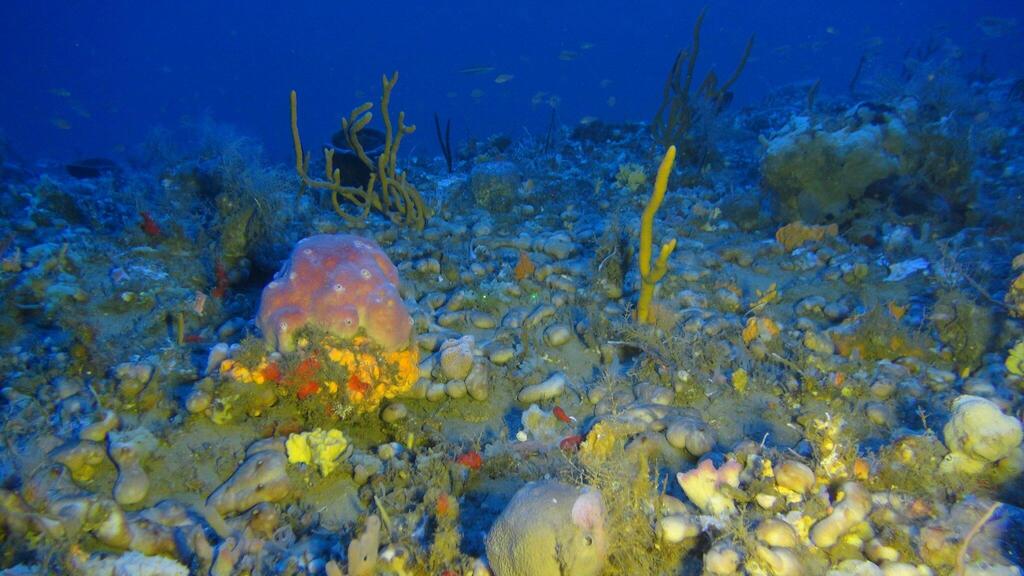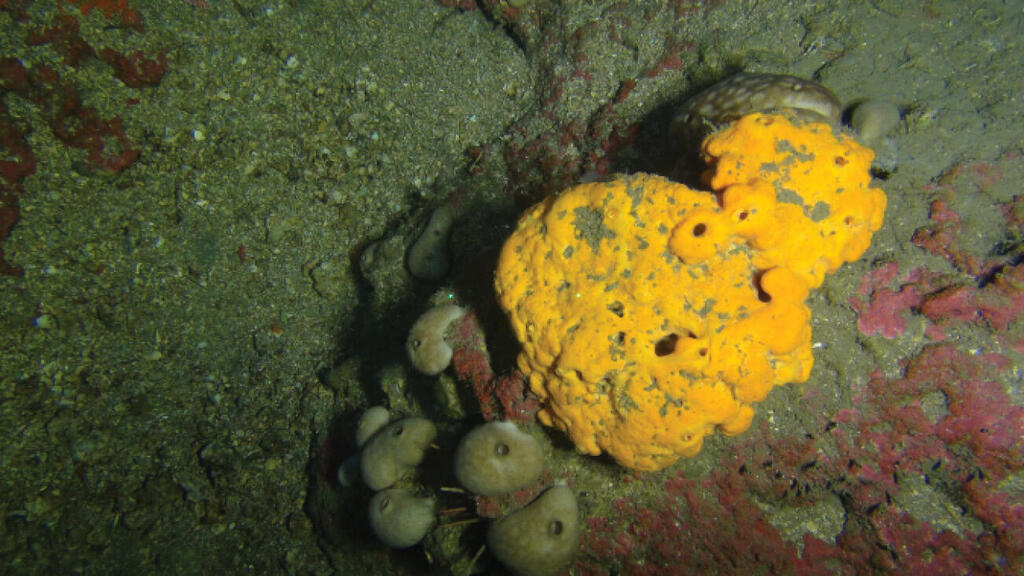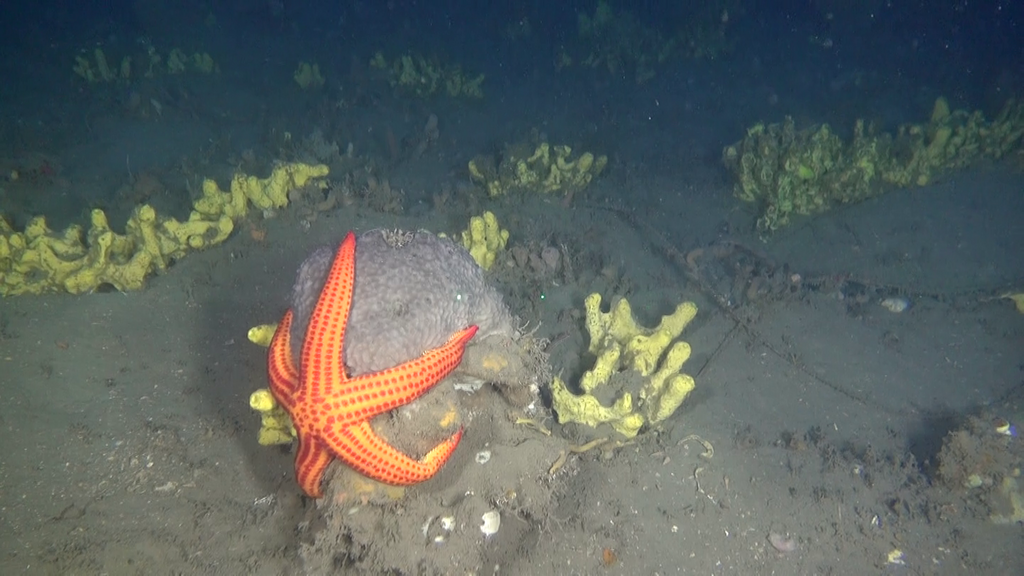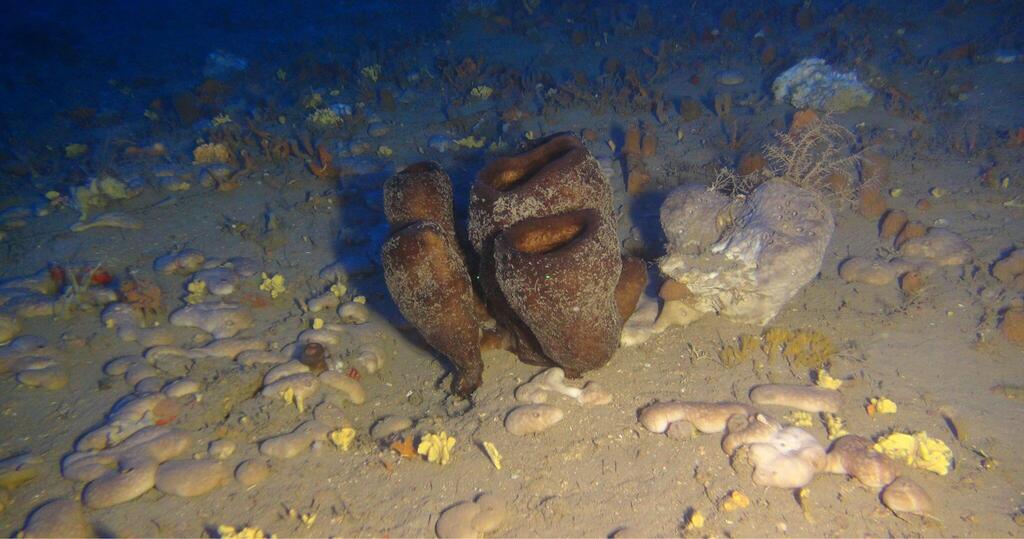Getting your Trinity Audio player ready...
About 100 meters deep and approximately 10 kilometers off the shores of Herzliya, an underwater ridge lies hidden beneath the sea, where mysterious and ancient organisms known as sponges thrive.
More stories:
We embarked on a journey there to witness and explore the area and the sponges themselves, to learn about the significance of pioneering research taking place under the sea for the sake of humanity's future.
In order to document the trip, an Israeli yacht club, Sea-Gal, provided us with a yacht. In the early morning hours of a calm summer day at the Herzliya marina, Yonatan (Johnny) Damtov, the ship's captain, gave his final instructions before we left.
Leading sponge researcher Dr. Tal Idan, a postdoctoral fellow at the Weizmann Institute of Science, explained the importance of the mysterious creatures. "Sponges are the basis of the ecological system, similar to how corals provide the basis of Eilat's coral reef," she said.
"It's important to know that sponges are animals. Unlike SpongeBob, they lack eyes, a mouth, or hands and legs. They are very simple life forms, among the earliest multicellular life forms to evolve," she added.
Idan also emphasized the importance of these animals. "Sponges feed through the filtration of seawater, effectively removing bacteria, viruses, tiny organic particles and even dissolved material from the water. This largely constitutes a food source that's not available to other organisms and is eaten by sponges. By doing this, sponges make previously unavailable food accessible on the seabed," she explained.
Alon Rothschild, director of the Marine Division of the Society for the Protection of Nature in Israel , adds more information about the ancient sea creatures.
"Tens of thousands of years ago, the Mediterranean Sea's level was much lower. The ancient shoreline of Herzliya and Tel Aviv is now submerged under 100 meters of sea water, is essentially a rocky ridge where sponges like to settle," he said.
So why do sponges prefer to reside specifically in this location?
"Imagine you're in the sea, trying to stand on a sandy beach while the waves move you from place to place," Rothschild explained.
"Therefore, marine organisms highly appreciate having some valuable stability factor called a rock, on which they can settle – providing them with stability. Therefore, the submarine rocky ridge serves as an anchor for the sponges' habitat, and all the surrounding marine life surrounding them," he said.
"Sponges are also called 'living hotels' because many organisms actually live within their numerous cavities, including worms, crabs, or fish," he added.
Since the sponges thrive in an extreme environment far from human reach, many people wonder how they can be studied by scientists. Idan explains that study of sponges is conducted using complex and unique equipment.
4 View gallery


Sponges on seafloor off the coast of Herzliya
(Photo: Oded Ezra, Itay Katzman, Asaf Giladi)
"The majority of our work is done with the help of a submersible robot that's linked to a ship and transmits a live feed of everything it sees," she said.
"This allows us to observe various types of sponges. Using the robot's arm, we can collect samples of various species that we aren't familiar with. Our goal is to identify them. Throughout the study, we discovered an incredible world that includes over 100 different species of sponges."
Significant amounts of money are invested into the study in order to deploy the robots to the seabed, using a dedicated research vessel. Idan provides a hint about one of the main reasons that led to the study's findings.
"Sponges produce chemical compounds to protect themselves, but we've identified and isolated these compounds and found out that they can serve as medicine," she said.
"Starting from antiviral drugs, like a medication for herpes that exists on the market today, all the way to cancer treatments options currently available, such as drugs for breast cancer and leukemia. These medications have their origin in molecules found in sponges," she points out.
However, as Rothschild explained, sponges are still in danger even at the bottom of the ocean. "While the sea seems harmless for the sponges, this is an illusion," he said.
"Fishing trawlers are a danger to the sea and sponges. The ship drags a net along the seabed, sweeping away everything in its path, and destroying habitats that have existed for hundreds of years or even more."
"Even fishing, in which fishermen catch most of the ecosystem's apex predators, is harmful," he added. "What's important to understand is that there are many severe and imminent threats to the sponges."




